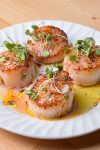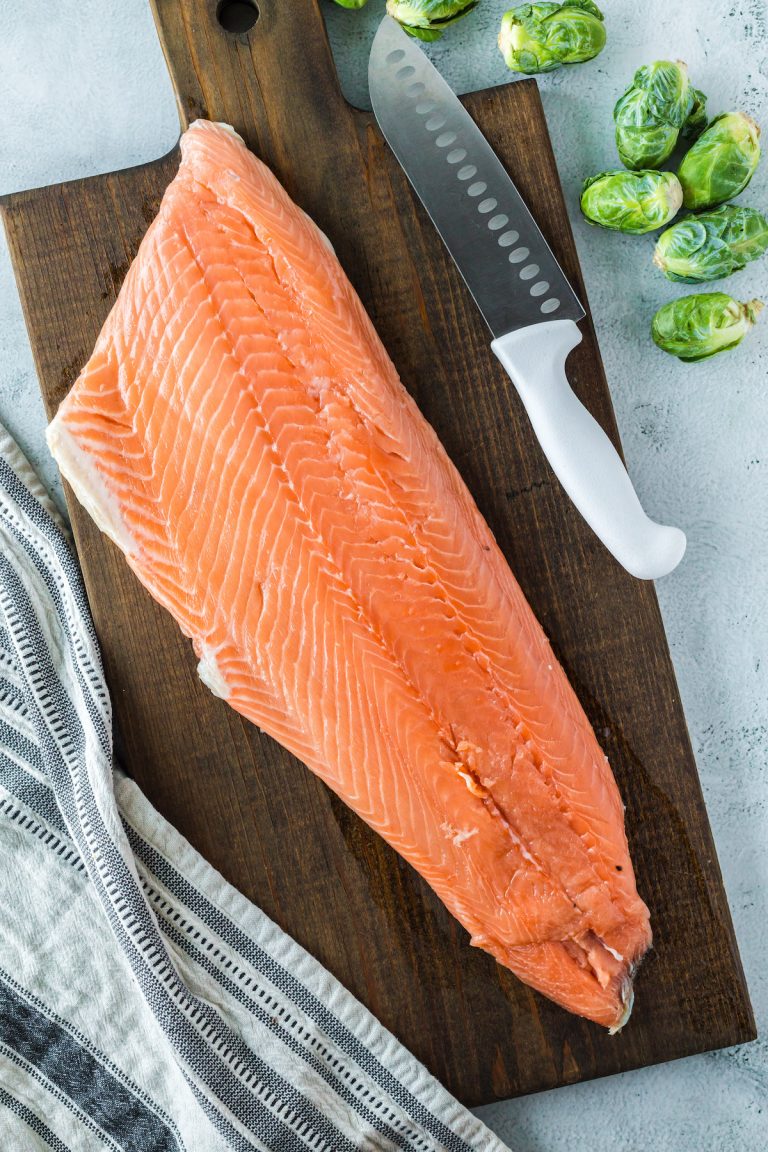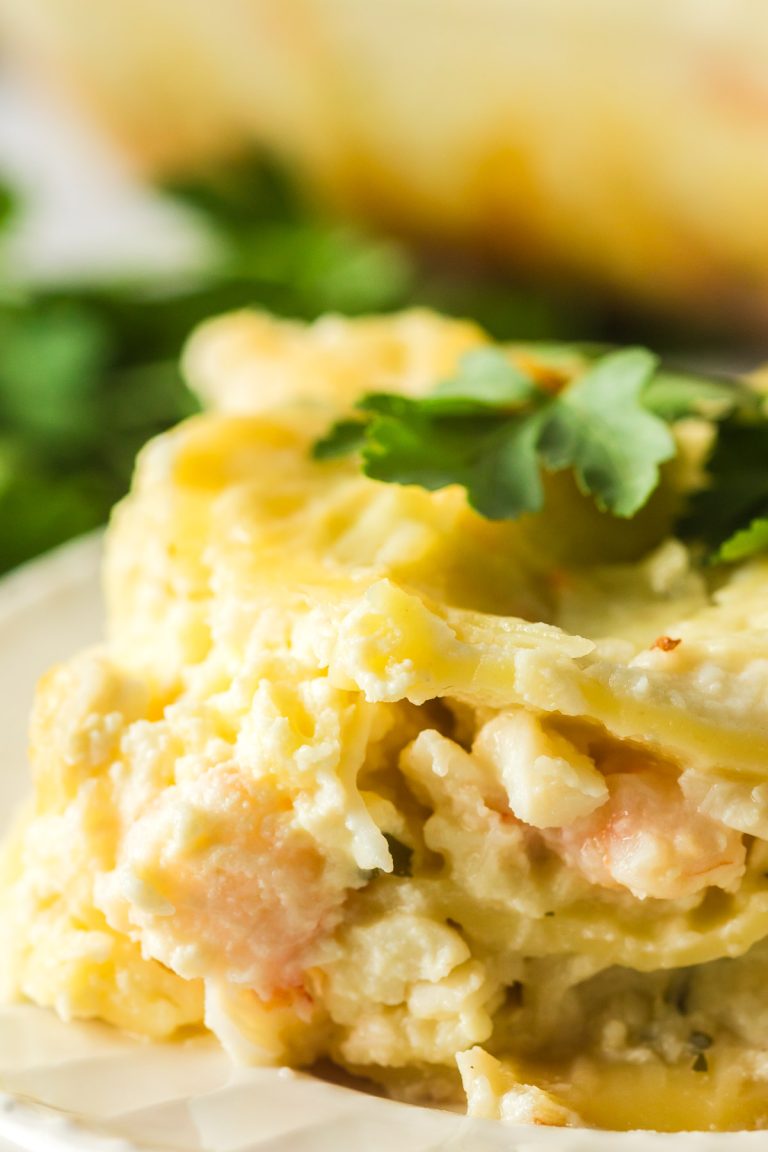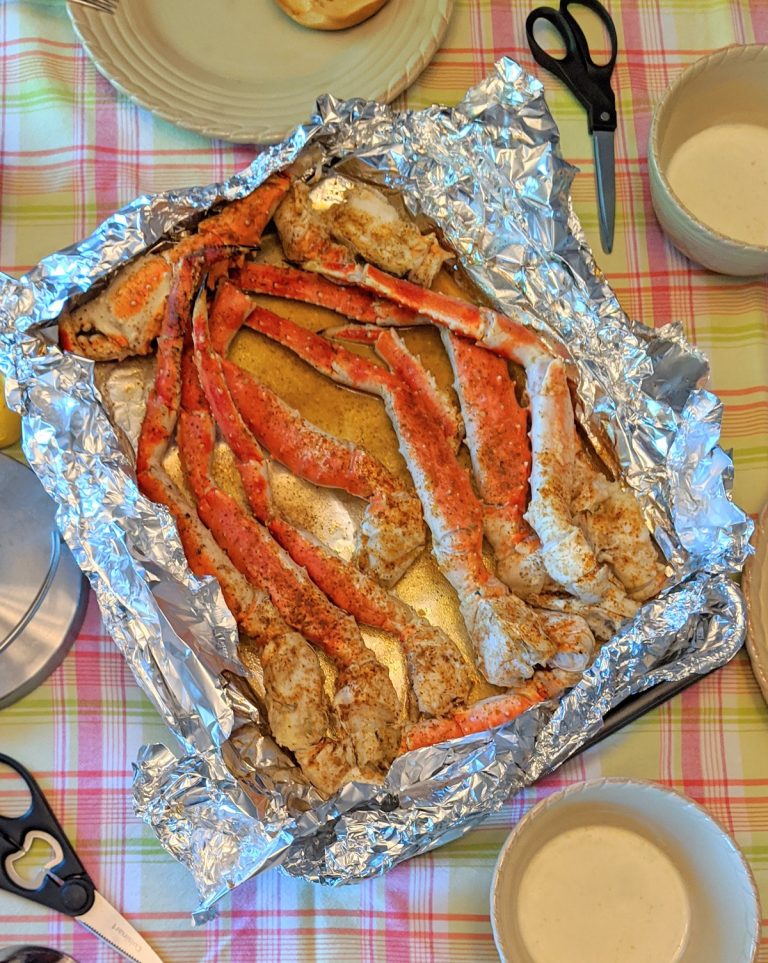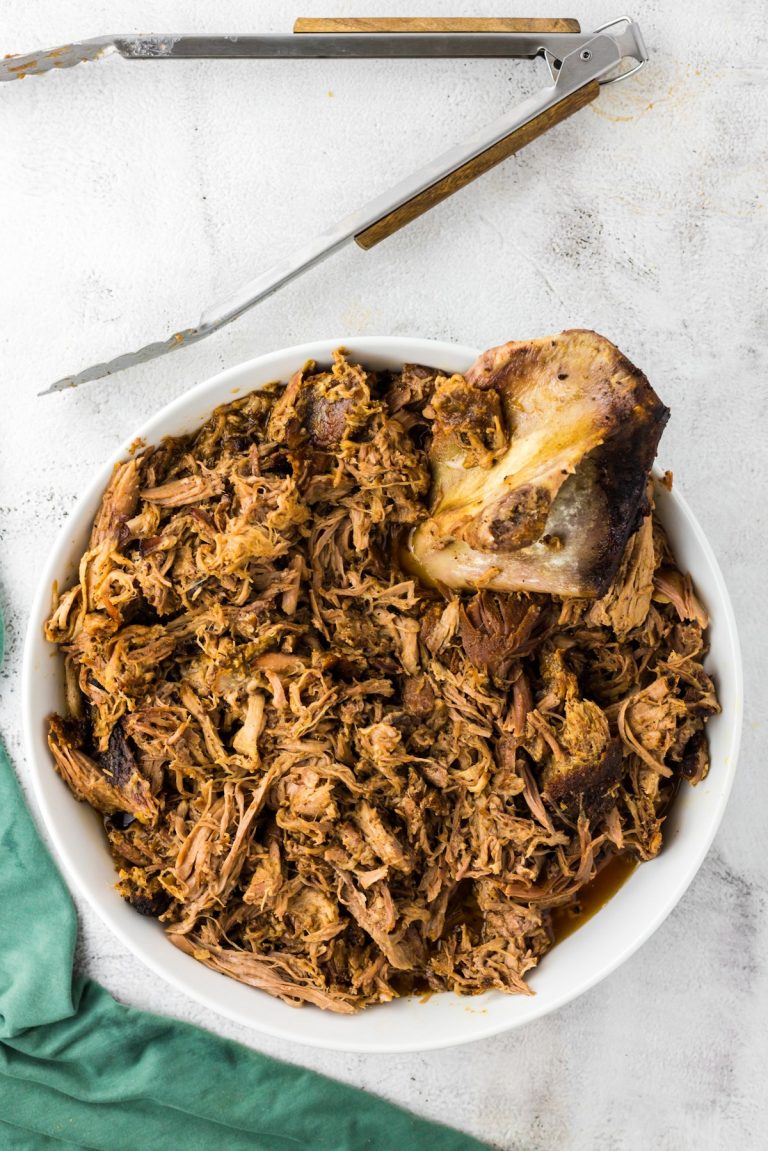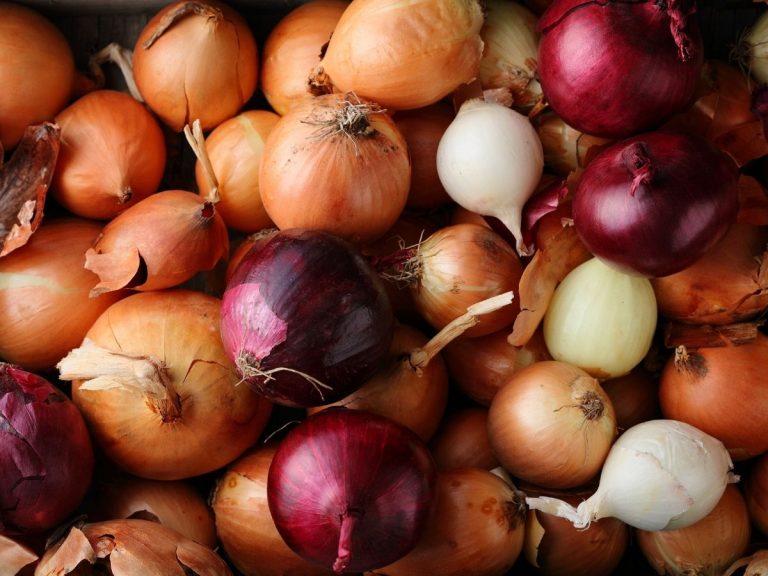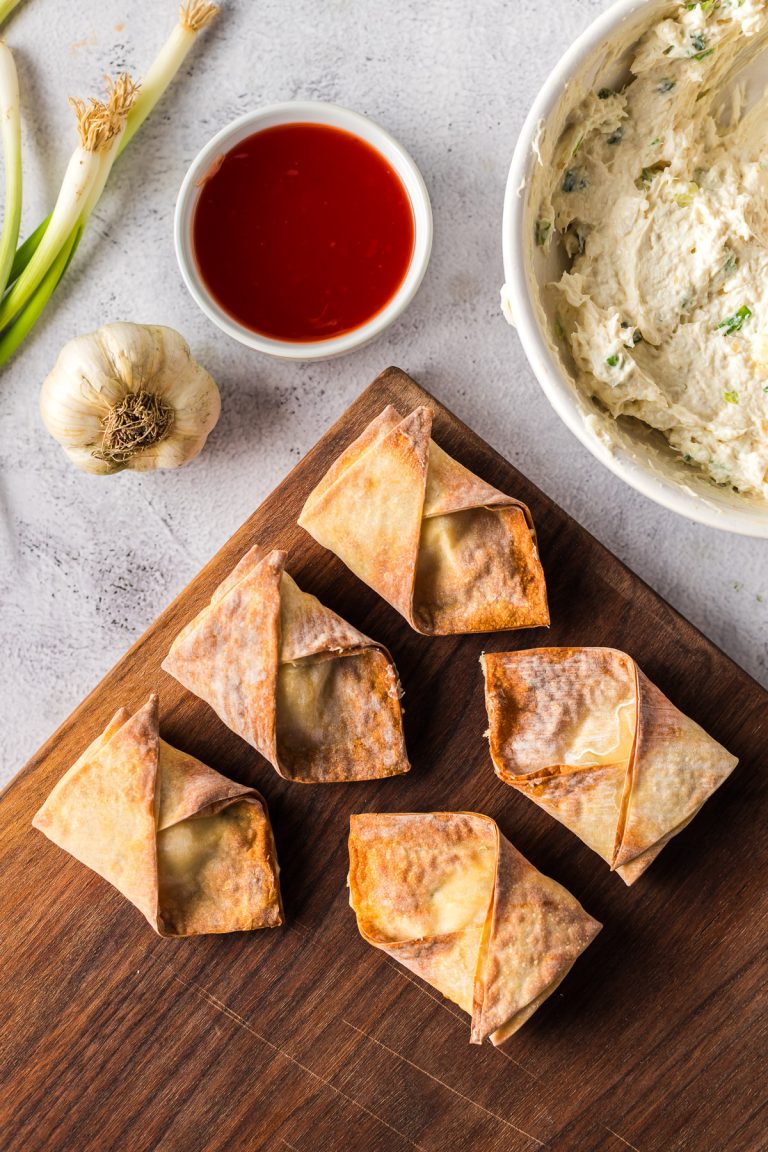Scallops are one of the most popular and delicious types of seafood out there! From risotto to carpaccio, they are always a crowd-pleaser. But, what are scallops exactly? Find out everything you need to know about this shellfish, including how to buy, cook, and store them.
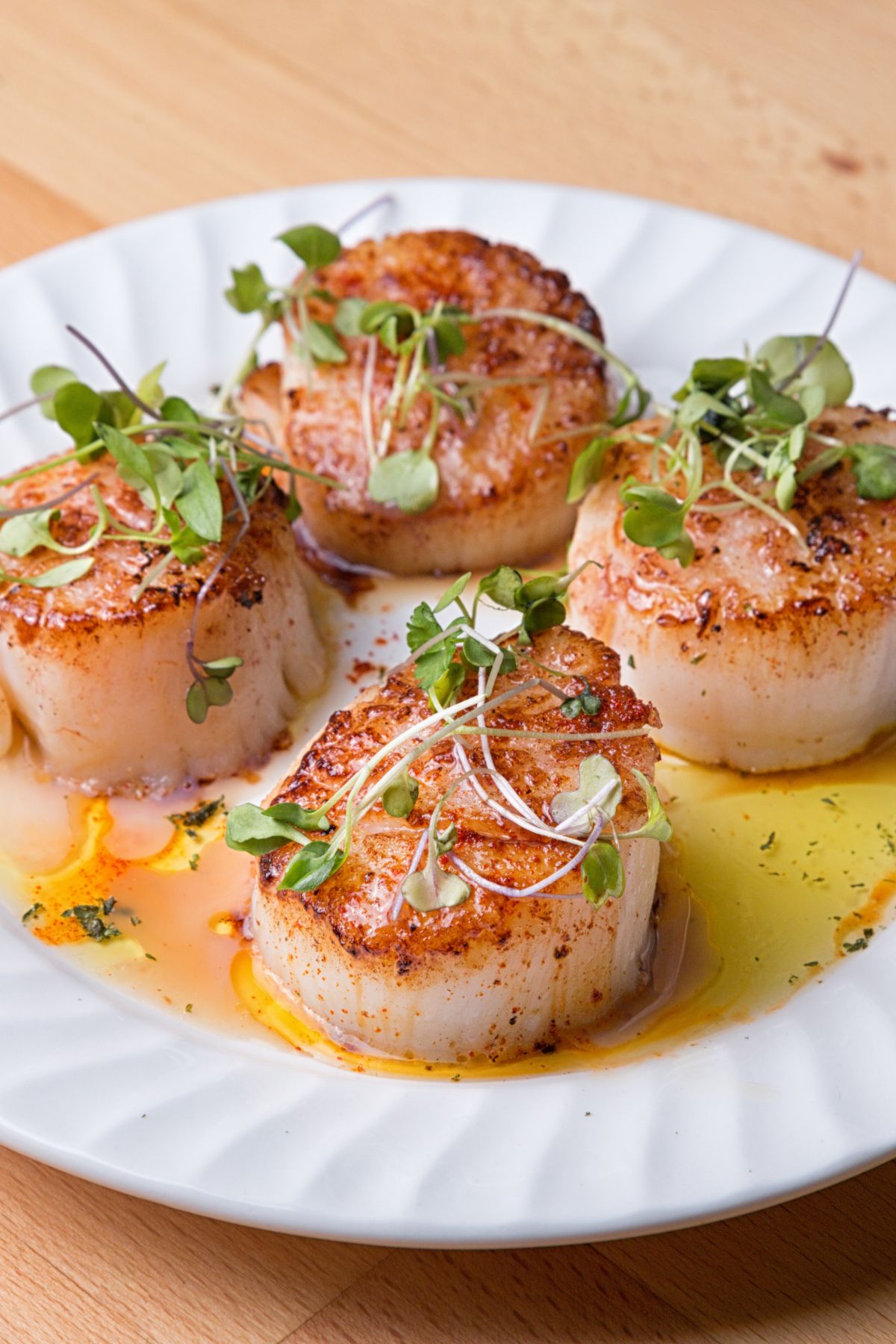
What are scallops?
Scallops are a type of saltwater marine bivalve mollusk, meaning they have two shells that surround a muscle on the inside. In fact, they belong to the same extended family as oysters, clams, mussels, and the like.
Their exterior shell has a characteristic fan-like shape, often adorned with ridges. The muscle (the part that we eat) is round, and it becomes tender and velvety once cooked.
Types of Scallops
There are two main types of scallops, each providing unique flavors and textures. Here is a simple breakdown:
- Bay scallops: Smaller (about ½-inch), more tender. Commonly found in shallow, warmer water, so they are easier to catch. This means they’re an economical option.
- Sea scallops: Larger (can grow to 2 inches). Found in colder water on the ocean floor, so they are more difficult to come by, making them a more expensive choice.
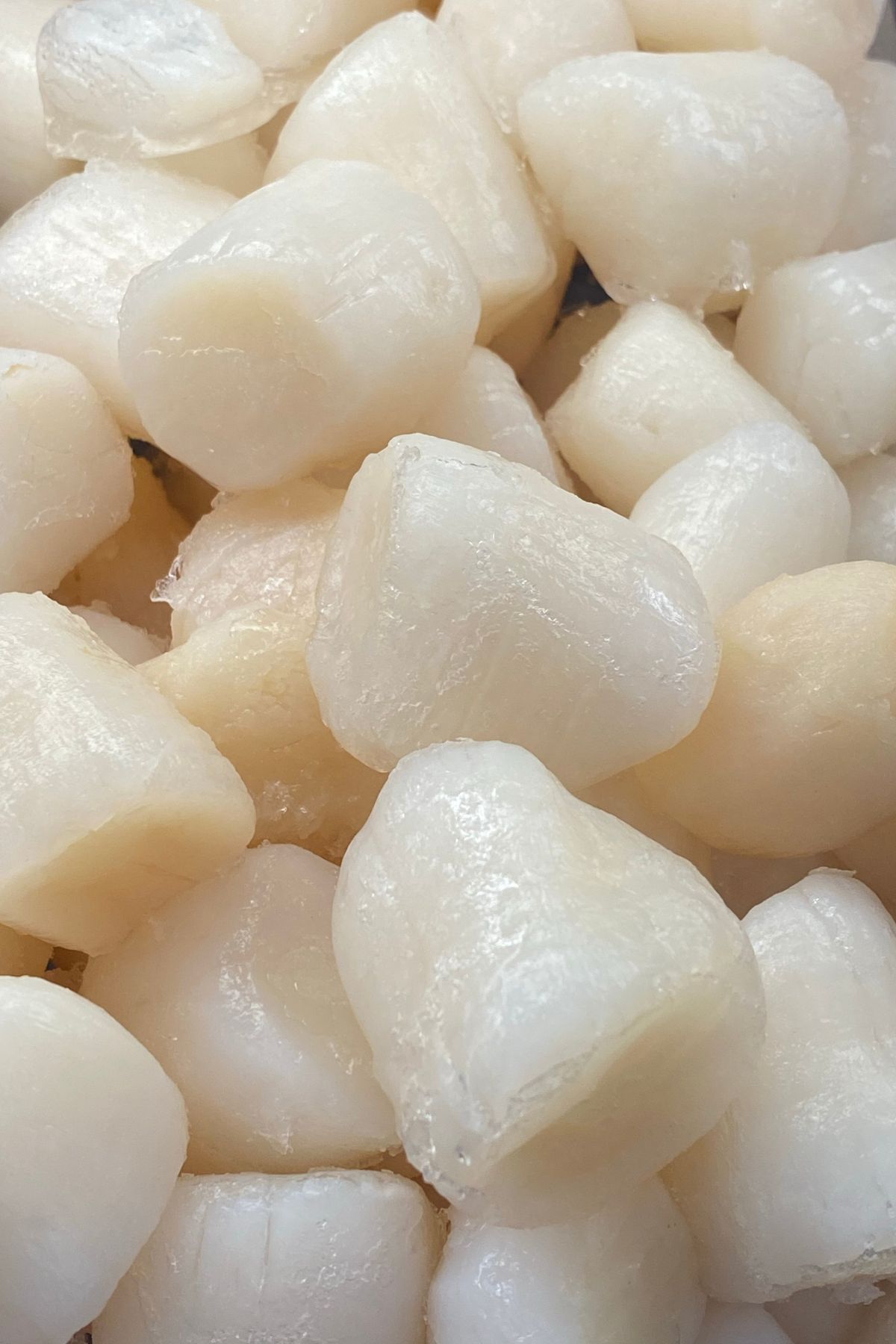
You should be able to find both options in most grocery stores or from reputable fishmongers. There are also a few other noteworthy classifications to keep in mind based on harvesting and processing techniques:
- Diver scallops: Harvested by hand by scuba divers instead of machines, meaning they will be more pricey. However, diving is a much more environmentally-friendly harvesting technique, so you can see how the higher price tag might be worth it.
- Wet scallops: Undergo a process of soaking in a solution, which gives them a perceived larger appearance and increases their weight. Try to steer clear of wet scallops.
- Dry scallops: Do not go through a soaking process, providing a more intense and “pure” flavor. It’s always better to purchase dry scallops if they’re available.
What do scallops taste like?
Scallops offer a mild, delicate, and seriously unique flavor. They deliver a sweet richness balanced by a hint of briny, oceanic tang.
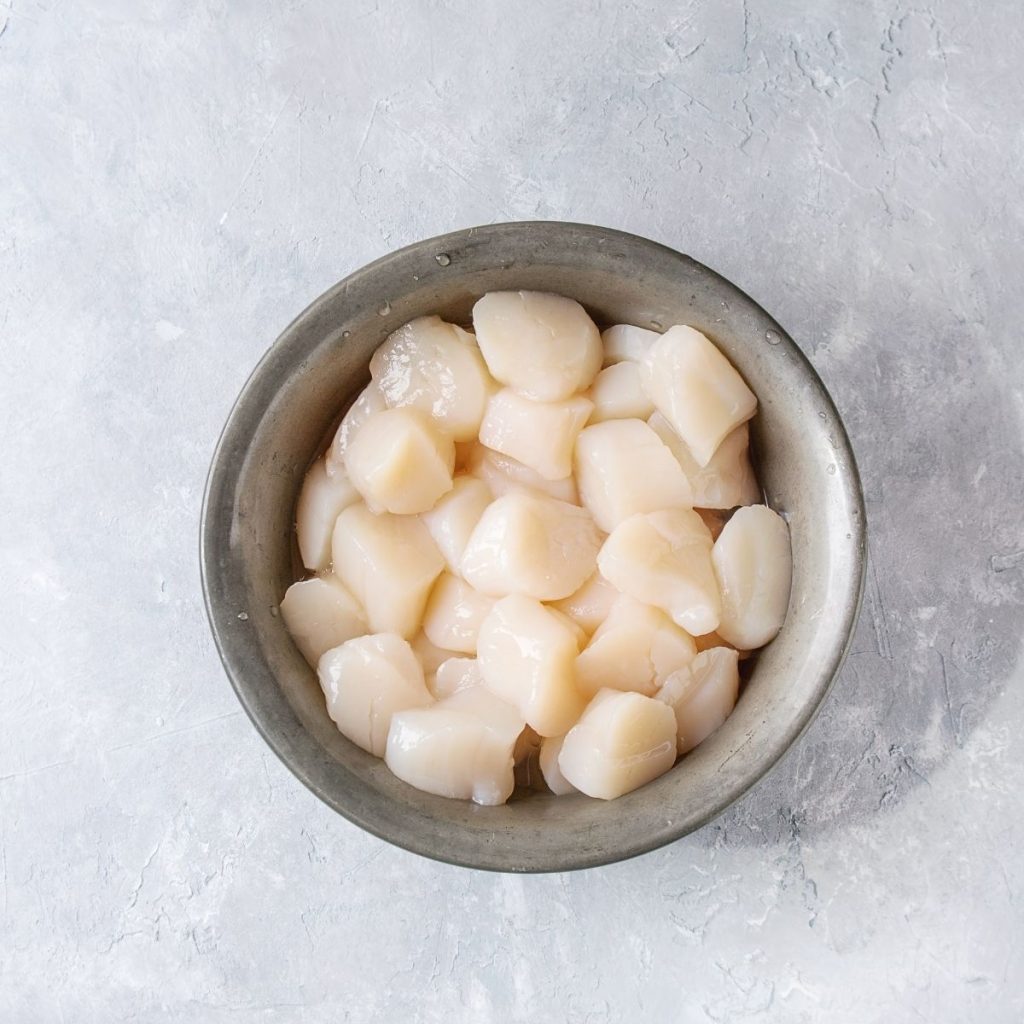
Their texture (if you cook them correctly) is perfectly tender and smooth. Seriously, you don’t even need to use a knife!
How to cook scallops
Scallops can be prepared in various ways, but searing them is by far the most popular. Just remember that scallops are quite delicate and can quickly overcook.
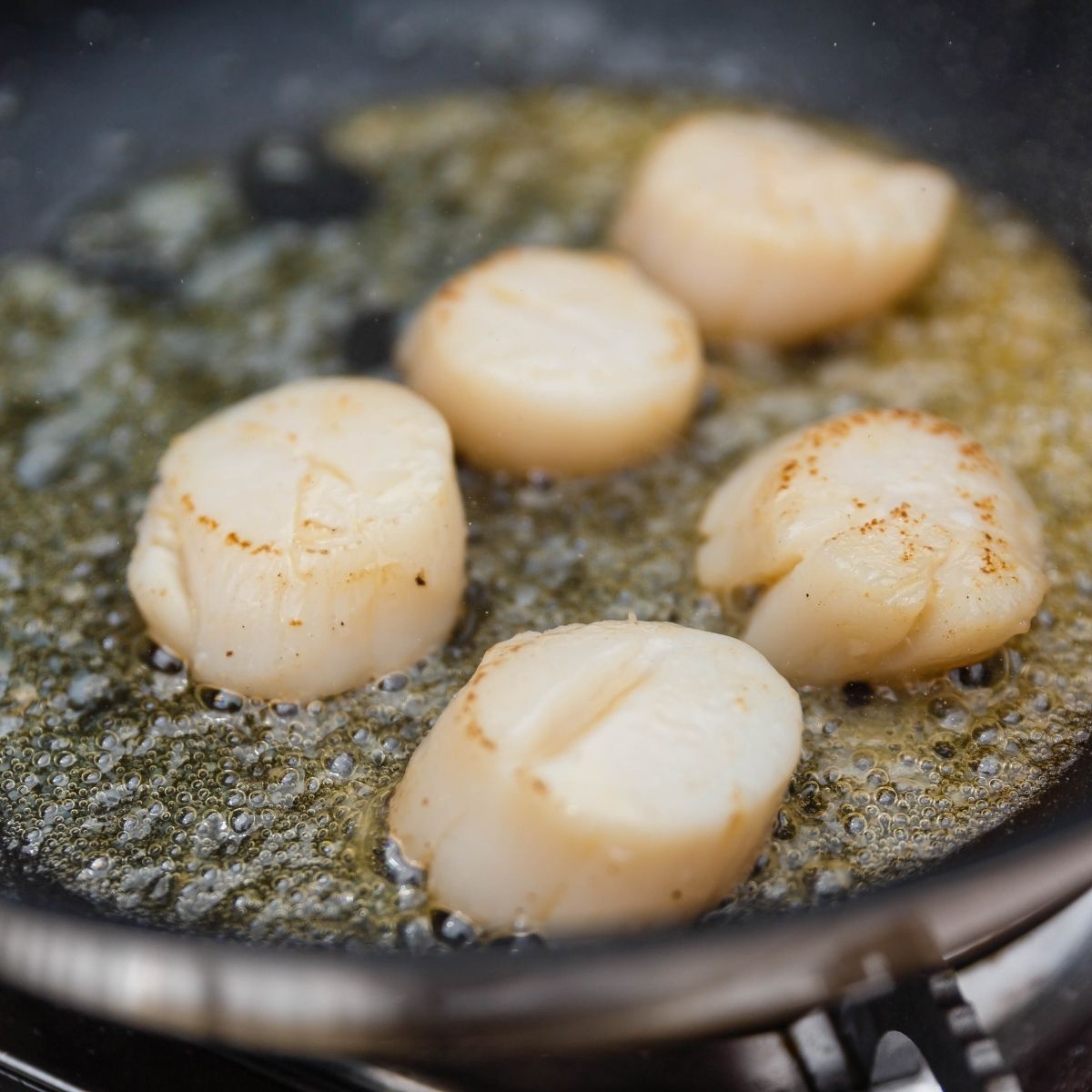
To prevent them from turning tough and rubbery, I suggest preparing the rest of your meal before starting to cook your scallops. Heat some olive oil or butter in a cast-iron or stainless steel skillet until it’s very hot.
In the meantime, rinse the scallops and remove the muscle if they’re still attached. Don’t forget to pat them dry to help achieve a golden brown and crispy crust. For seasonings, I usually stick to simple options like salt and pepper. A good rule to follow when you’re cooking scallops is to keep them simple and let their natural flavor shine through.
Pan-sear the scallops for about two minutes on the first side, but don’t touch them! This will help the crust develop. Flip them and repeat the same process and that’s it! Enjoy them on their own with a squeeze of lemon, over top risotto, or in a white wine sauce.
Scallop & Seafood Recipes
If you’re looking to try scallops or are interested in other seafood recipes, here are some ideas to get you inspired to cook:
Where to Buy Scallops
When it comes to buying scallops, you’ll often find them sold by weight. While most supermarkets usually sell scallops, I recommend heading to a reputable fish market for a safer bet!
Keep an eye out for packaging marked with the letter U (which stands for “under”) and a number or range that tells you how many scallops you’ll get per pound. For example, “U-10” means there are fewer than 10 scallops per pound.
One last thing is to check for authenticity! Real scallops should appear varied in size and slightly oblong (no two will be the same). If you’re unsure about the components of the package, you can always ask at the counter!
Scallop Nutritional Information
Scallops are not just delicious! Did you know they’re a nutritional powerhouse too? Here’s a quick breakdown of their health benefits:
- Protein-rich: Scallops are rich in protein, making them a great choice if you want to increase your intake.
- Low in fat: Scallops are relatively low in fat compared to other types of seafood and cuts of meat.
- Omega-3s: They are full of omega-3 fatty acids, which reduce inflammation in our bodies, support our brains, and promote heart health.
- Minerals: Scallops are packed with magnesium and potassium. Magnesium helps our nerves function correctly while potassium keeps our muscles and nerves working. Sounds pretty important!
How to store scallops
Proper storage of scallops is essential for maintaining their freshness. Follow these simple steps to keep them fresh and safe to eat:
- Fridge: Refrigerate fresh scallops at temperatures below 38F and try to consume them within a day.
- Freezer: For longer storage, freeze your scallops in airtight containers or freezer bags. Just remember that freezing them may slightly alter their texture, but it shouldn’t have any effect on their taste. This should give you up to 3 months.
Scallop FAQs
Can you eat raw scallops?
Yes, you can definitely eat raw scallops! They are often used in dishes like sushi or carpaccio. If you’re serving them raw, make sure they are fresh and purchased from a reputable fishmonger.
Do I need to rinse my scallops before cooking them?
Yes, always rise scallops under cold water to remove sand or grit before cooking. Don’t forget to pat them dry so you can achieve the perfect sear!
How do I know when my scallops are done cooking?
Scallops are done when they have a golden-brown crust on the surface and are slightly translucent in the center. This usually takes about 2 minutes per side over medium-high heat if you’re pan-searing them.
Can I freeze fresh scallops?
Yes, fresh scallops can be frozen for up to three months. I recommend rinsing, patting dry, and then freezing them in a single layer on a lined baking sheet. Once frozen, they can be transferred to a freezer-safe bag or container.

